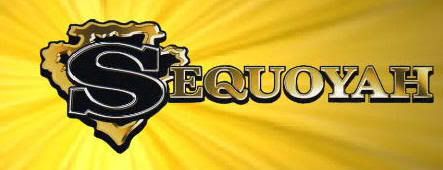
The influence of the work of Sequoyah on the Cherokee Nation’s efforts to develop a culture more in keeping with European standards was significant. His syllabary helped the Cherokee overcome the limitations of a strictly oral culture and establish a constitutional basis for their government. Without Sequoyah’s work the Cherokee’s newspaper would have been impossible, and the efforts of missionaries to convert them to Christianity would have lagged.

Humble Beginnings Of a Great Man:
Sequoyah was born about 1776 to a Native American woman and an obscure white trader named Gist. After Gist abandoned the family soon after his child’s birth, Sequoyah and his mother lived alone in the foothills of the Great Smokies near the sacred town of Echota in what is now Tennessee. As he grew older Sequoyah showed artistic and mechanical skill that would help him with what, early on, became his life’s task. In his solitude, Sequoyah had found plenty of time to contemplate some of the things that were to him a teasing mystery. The most important of these was the European’s ability to put thoughts upon paper and understand them.
The Foundations Of Cherokee Literacy:
Sequoyah refused to share the belief of some of his people that written speech was a gift of the Great Spirit. He boldly declared it to be a mere ingenious thing almost anyone could master with sufficient effort. The young man soon focused his effort and talents toward creating a way for his people to communicate over distance and time, as well as preserve their wisdom, history, and culture for generations to come. Sequoyah sought at first to make a character for each word, but in a year he had thousands of characters, that even he could not decipher. Finally, he began attempting to develop an alphabet based on syllables in the language—a system in which single letters would stand for syllables. By 1820 he had determined there were 86 syllables in the Cherokee language and that for his alphabet he would need a corresponding number of characters. To solve the problem of creating so many distinctive characters, Sequoyah adapted Roman letters, adding curls and dashes and turning them upside down.
A Convincing Demonstration:
A dozen years had gone into the work, and now he was ready to make his invention known to his people. The first scholar was his own daughter. In only a few days, she was able to read and write. In 1821 he went with his daughter before a gathering of the tribal heads. He sent his daughter away and out of earshot. Then he asked one of the principal men to make a few sentences of talk. As it was spoken, Sequoyah put it down on paper. Then he called his daughter, and she read it back to the group.
Soon the entire nation was reading and writing Cherokee. The demand for pen and paper skyrocketed among the Cherokee, and letters sped from the East to the West where a small band of 1,000 had moved in 1817. A translation of the New Testament using the new syllabary was completed in 1825, and in 1827, the Council of the Cherokee Nation formally resolved to establish a national newspaper in the mother tongue. Two years earlier the Legislative Council of the Cherokee Nation had presented Sequoyah with a medal as a token of respect and admiration for his ingenuity. In 1917 the State of Oklahoma presented to the United States a statue of Sequoyah, placed in the Hall of Statuary in the National Capital. Today a large wooden statue in his honor stands in Cherokee.

 Horizon Dude Horizon Dude · Wed Jan 30, 2008 @ 07:51am · 0 Comments |